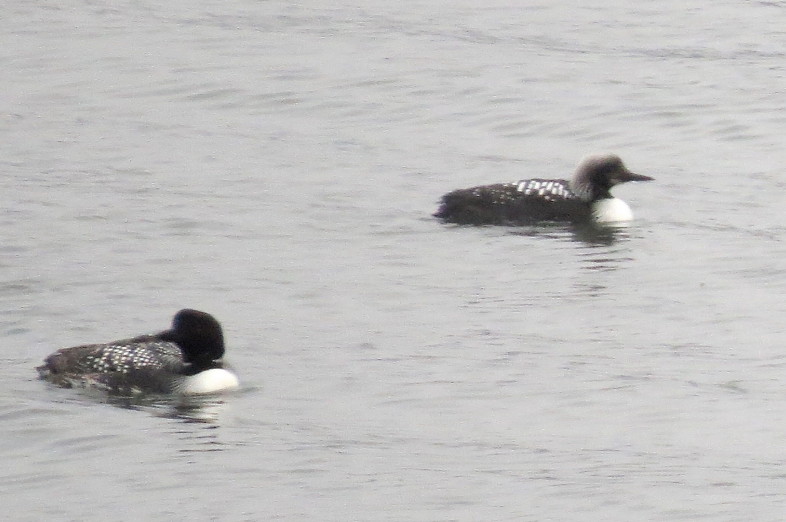Our 2015 awardee of the Julie Nicholson Citizen Science Award, Mike Korkuc, spotted a slightly smaller loon hanging out with some Common Loons on Lake Dunmore on Tuesday afternoon. He initially thought it might be a Red-throated Loon, which occasionally migrate through the area. Upon looking at his photos more closely the following day, the bird did not quite match up to what a Red-throated should look like. After Mike sent the photo around to me and others, we can be pretty sure the loon was a Pacific Loon, a rare visitor to Vermont. The white patches on the back, the dark throat, pale gray head, and the vertical stripes on the side of the neck make for an extraordinarily beautiful loon.
Pacific Loons breed from Hudson’s Bay to Alaska in North America, and most of them overwinter on the Pacific coast. They actually spend most of their lives on the ocean because of the short breeding season on the arctic tundra lakes. There have over a dozen Vermont eBird entries going back to the 1990s, but nearly all of these were observed from November to January. There was only one other sighting of a Pacific Loon in spring in Vermont. More recently, two Pacific Loons were observed in December 2015 on Lake Champlain. There have been more sightings of these far north breeders during the winter months along the New England coast, but they are still far from common in the eastern U.S. Little is known about the status of the Pacific Loon population, but some researchers estimate that they might be the most abundant loon species in North America.
I was lucky enough to see a group of “Pacifics” on a canoe trip in the Northwest Territories several years ago, but that was a long way to paddle to find this usually northern and western bird.


From the photo, I am not at all sure this is a Pacific Loon but the observer should be fairly sure. I am wondering about the bill, though should be upswept rather than straight.